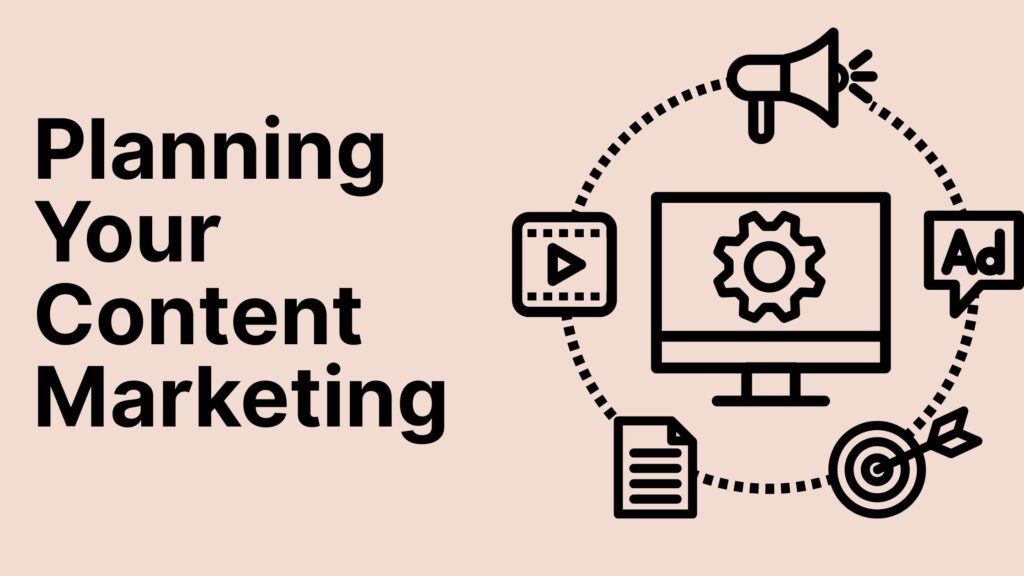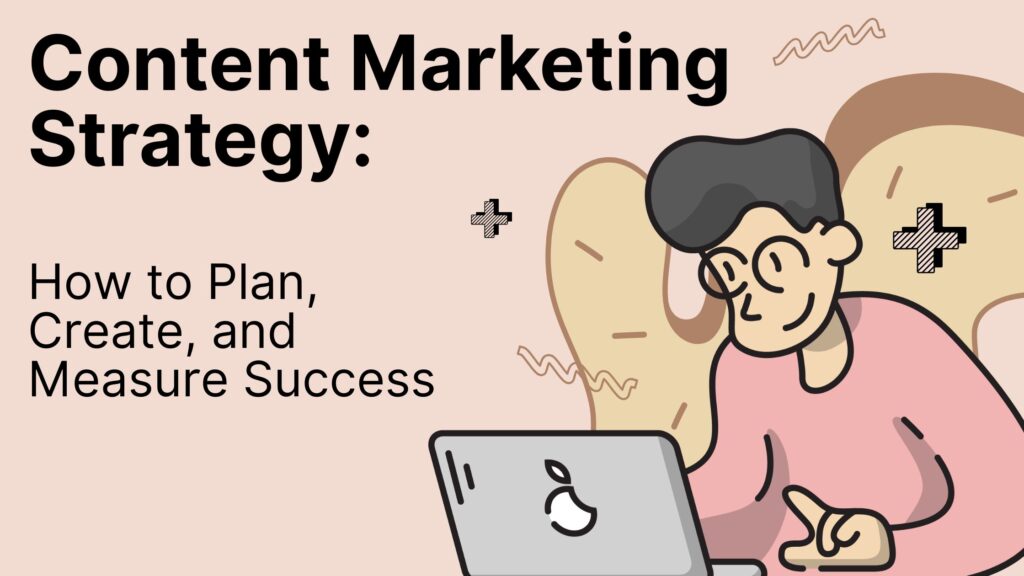In today’s digital-first world, content is more than just words on a page—it’s one of the most powerful tools brands have to connect with their audience, build trust, and drive meaningful business results. But creating content without a strategy is like shooting arrows in the dark. To achieve real ROI, you need a clear, well-documented content marketing strategy that outlines not only what you’re creating, but why and how you’re measuring its success.
In this blog post, we’ll explore how to build an effective content marketing strategy—from planning and creation to measuring performance. Whether you’re a startup, a solopreneur, or a marketing team at a large enterprise, this guide will help you sharpen your approach and maximize your results.
Step 1: Planning Your Content Marketing Strategy
Before you start writing blogs or producing videos, you need a plan that aligns with your overall business goals.
1. Define Your Goals

Start with the big picture. What do you want to achieve with content marketing? Common goals include:
- Increasing website traffic
- Generating leads or sales
- Boosting brand awareness
- Enhancing customer retention
- Educating your audience
Your goals should be SMART: Specific, Measurable, Achievable, Relevant, and Time-bound.
2. Know Your Audience
You can’t create effective content without understanding who you’re speaking to. Develop buyer personas—semi-fictional representations of your ideal customers that include demographics, pain points, goals, and content preferences.
Ask questions like:
- What problems is my audience trying to solve?
- Where do they hang out online?
- What kind of content do they consume (blogs, videos, podcasts)?
3. Audit Your Existing Content Marketing Strategy
If you’ve been creating content already, conduct a content audit. Review what’s working, what’s outdated, and where the gaps are. Tools like Google Analytics, SEMrush, or Ahrefs can help you assess traffic, engagement, and keyword performance.
Step 2: Creating High-Impact Content Marketing Strategy
Once your plan is in place, it’s time to create content that serves your goals and resonates with your audience.
1. Choose the Right Content Types

Not all content is created equal. Depending on your goals and audience, you might choose:
- Blog posts for SEO and thought leadership
- Videos for social engagement and tutorials
- Infographics for visual storytelling
- Ebooks/Whitepapers for lead generation
- Podcasts for niche authority and brand personality
- Email newsletters for nurturing leads
The key is to diversify your content while staying consistent with your brand voice.
2. Build a Content Calendar
A content calendar helps you stay organized and consistent. Include:
- Topics/titles
- Deadlines and publish dates
- Assigned creators or teams
- Distribution channels
Planning your content ahead also ensures you’re aligning with seasonal trends, campaigns, and business initiatives.
3. Optimize for SEO
Search engines are a major source of organic traffic. To make your content discoverable:
- Do keyword research using tools like Google Keyword Planner or Ubersuggest
- Use keywords naturally in titles, headers, and meta descriptions
- Include internal links to other content on your site
- Optimize images with alt tags and compression
- Make sure your content is mobile-friendly
SEO should be baked into your content creation process, not added as an afterthought.
4. Tell a Story
Content that connects emotionally performs better. Whether you’re writing a blog post or shooting a video, focus on storytelling. Structure your content with a clear beginning, middle, and end. Address a problem, offer a solution, and end with a compelling call to action (CTA).
Step 3: Distributing Your Content Marketing Strategy
Creating great content is only half the battle—you need to ensure it reaches your audience.
1. Use Multi-Channel Promotion
Share your content across all relevant platforms:
- Social media (LinkedIn, Twitter, Facebook, Instagram)
- Email marketing
- Paid ads (Google Ads, social ads)
- Online communities and forums (Reddit, Quora, Facebook groups)
- Influencer partnerships and guest posts
Tailor the message for each platform to match its format and audience behavior.
2. Repurpose Content
One piece of content can be turned into many formats. For example:
- A blog post can become a podcast episode, infographic, and several social posts
- A webinar can become a YouTube video and a series of blog posts
Repurposing saves time and helps you get more mileage out of each piece.
Step 4: Measuring Success For Content Marketing Strategy
To know if your strategy is working, you need to track the right metrics.
1. Key Performance Indicators (KPIs)
Align your KPIs with your goals. For example:
- Brand Awareness: Page views, social shares, impressions
- Lead Generation: Conversion rates, form completions, email sign-ups
- Engagement: Time on page, bounce rate, comments
- Sales: Attribution tracking, sales from content leads
Tools like Google Analytics, HubSpot, and Social Media Insights are invaluable here.
2. Set Benchmarks and Analyze
Don’t just collect data—interpret it. Compare performance over time, test different formats, and find patterns. Ask:
- What content performs best?
- Which channels drive the most traffic or conversions?
- What’s underperforming and why?
This analysis helps you refine your strategy and improve results over time.
3. Feedback and Continuous Improvement
Engage with your audience directly. Use comments, surveys, and feedback forms to understand their content preferences and pain points.
Also, stay updated with industry trends and competitors. What’s working in your niche may change, and your strategy should evolve too.
Final Thoughts
Content marketing isn’t a one-and-done tactic—it’s an ongoing strategy that requires consistent planning, creative execution, and rigorous measurement. By understanding your audience, creating valuable content, promoting it effectively, and continually analyzing your results, you can build a content engine that fuels long-term business growth.
Remember: successful content marketing doesn’t just attract people—it builds relationships. And with the right strategy, you can turn those relationships into loyal customers and brand advocates.
https://digitalazadi.com/To Learn Digital Marketing Srategy visit Digital Azadi

